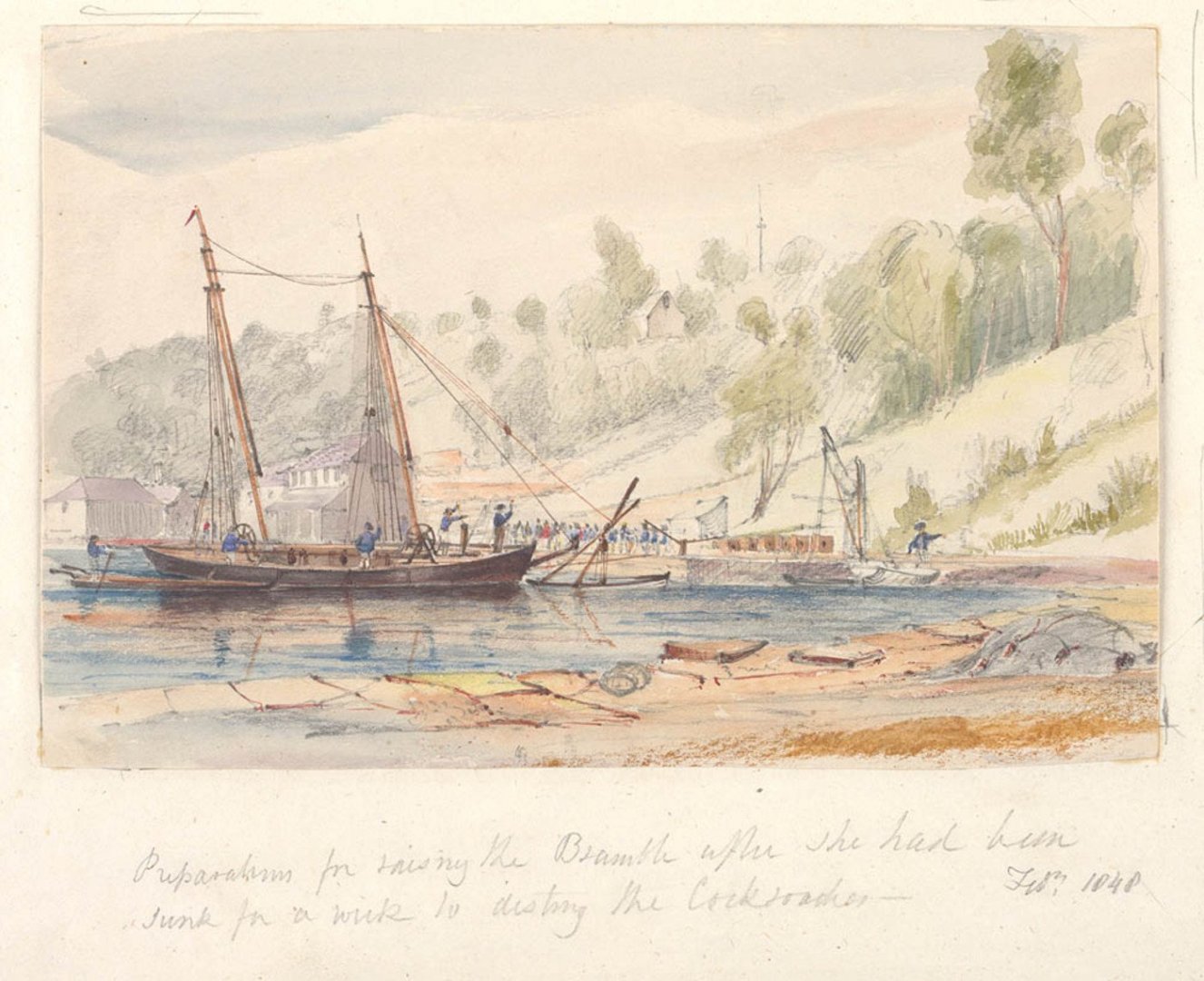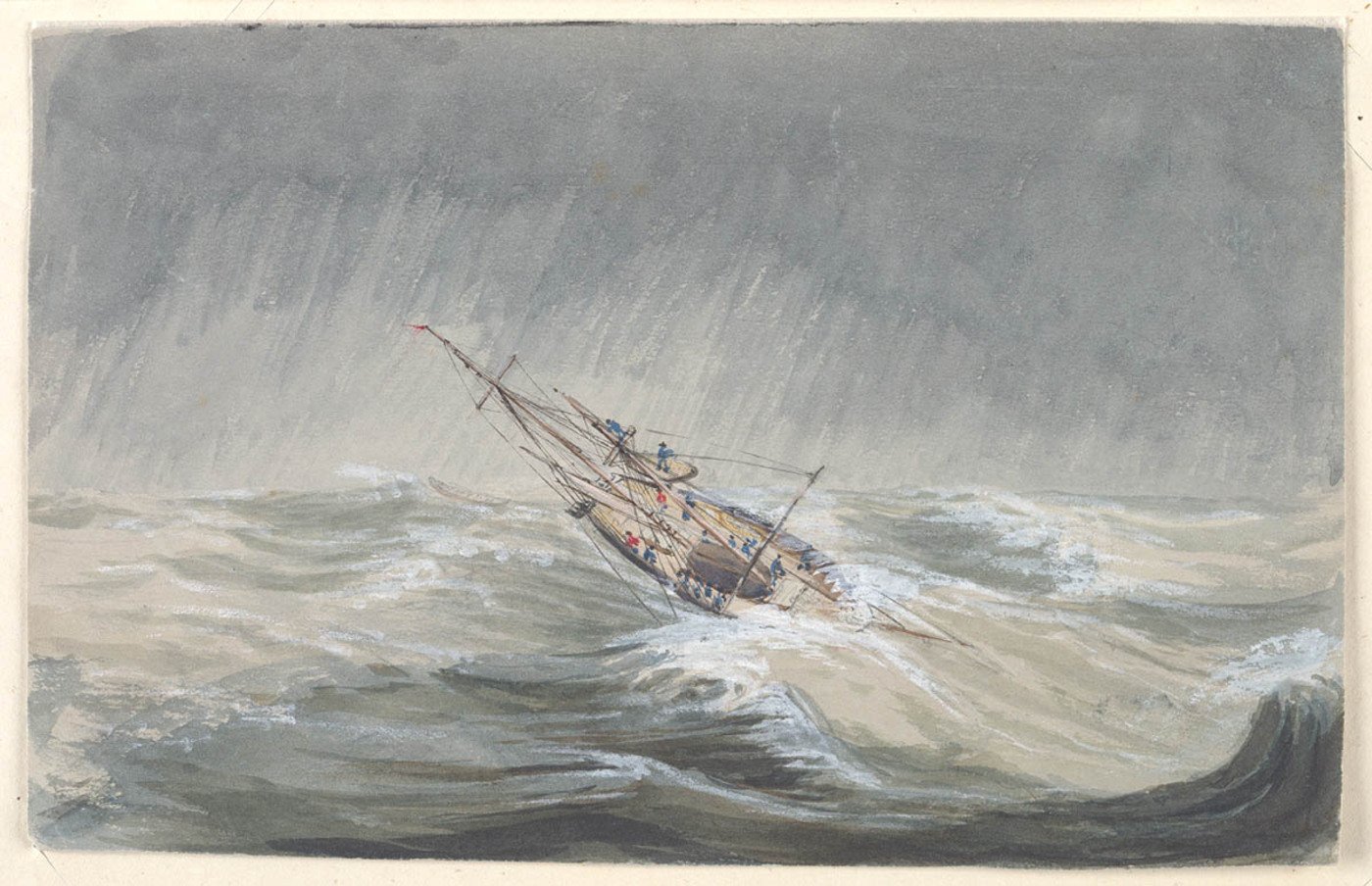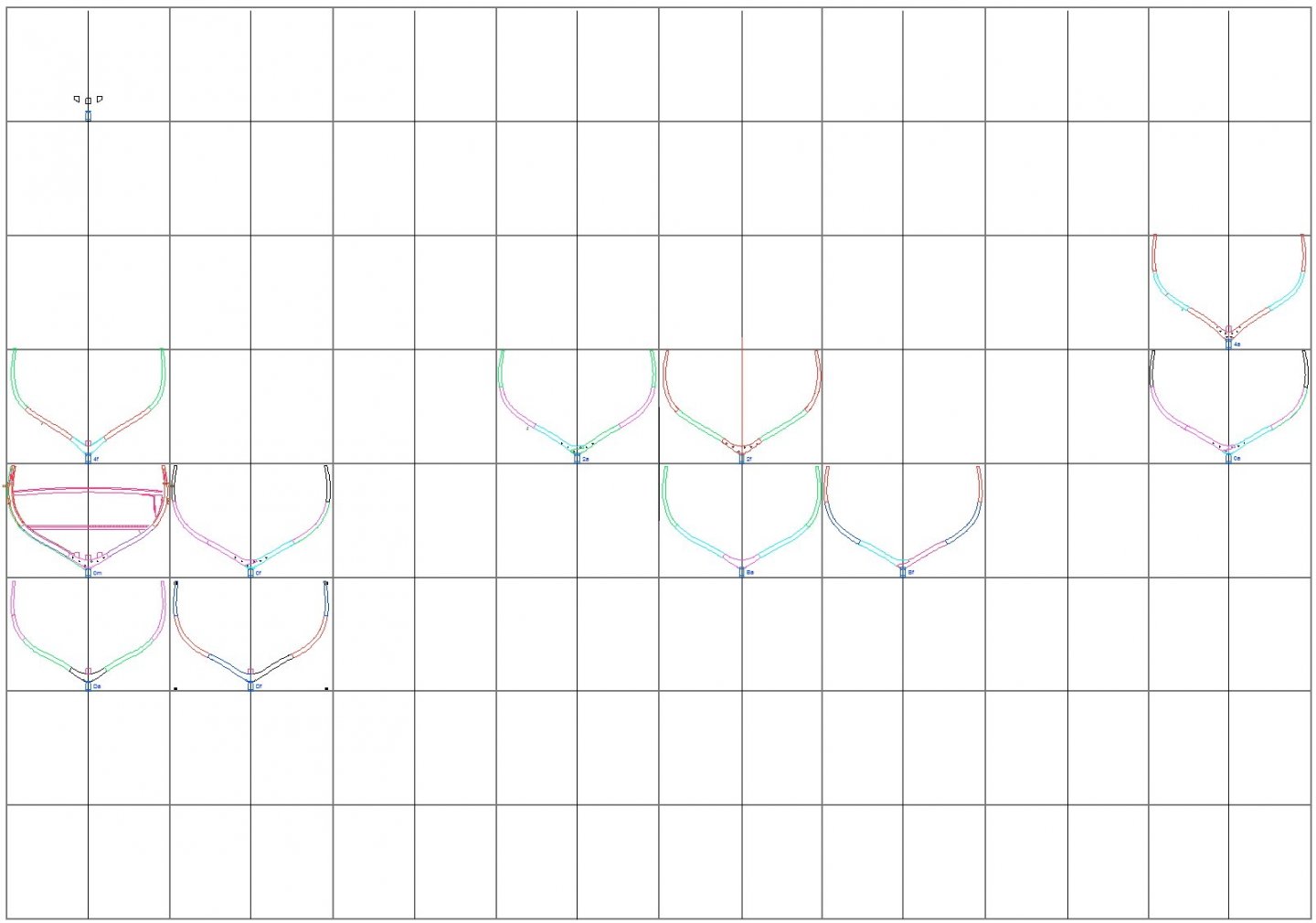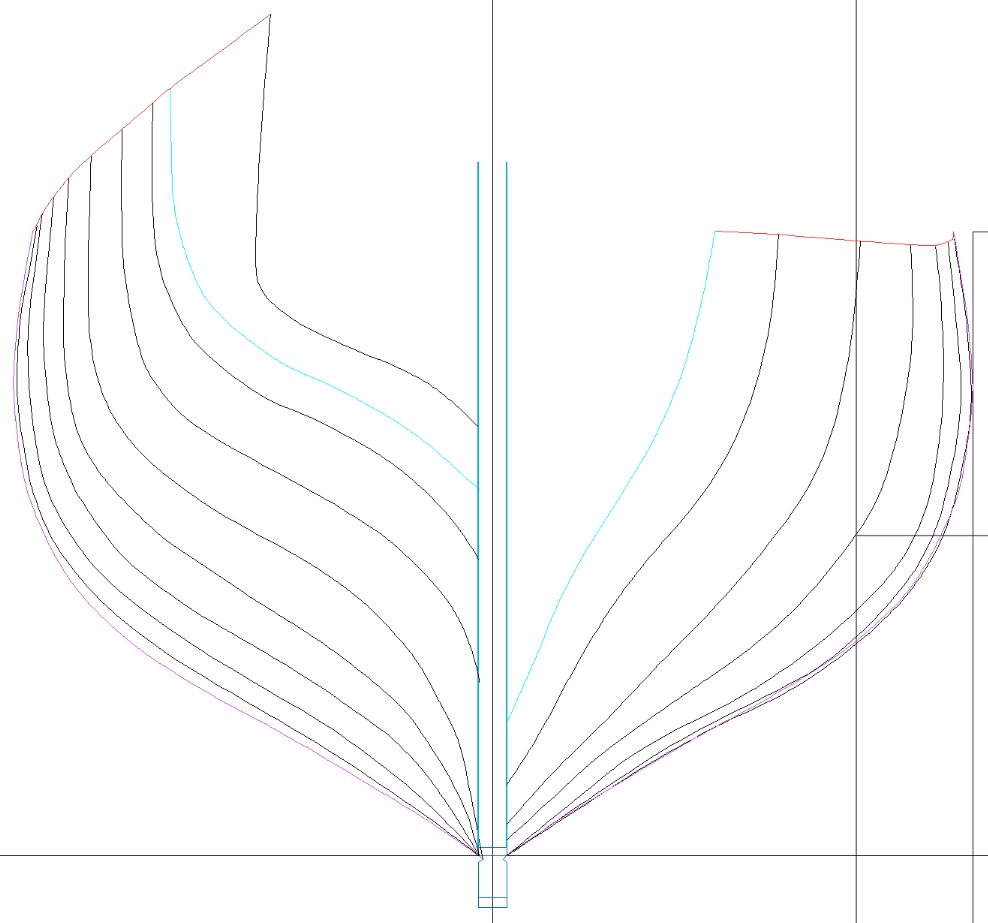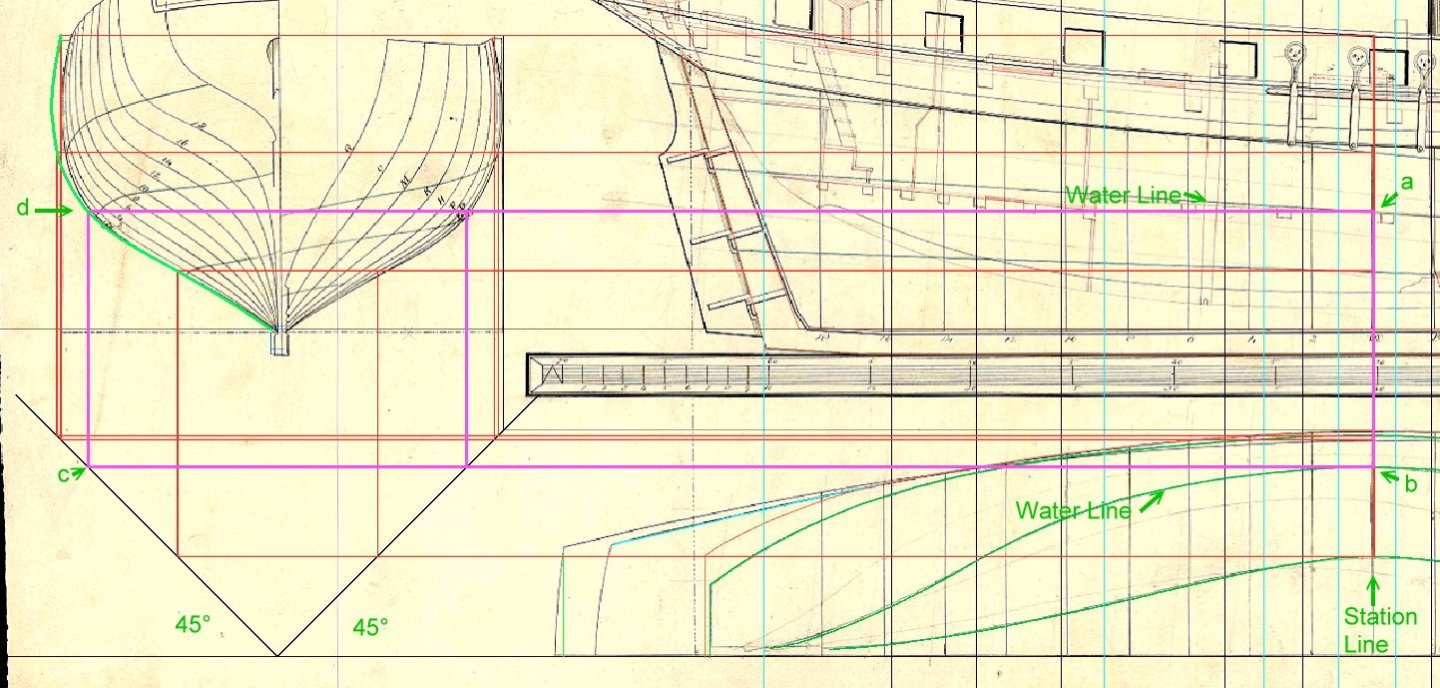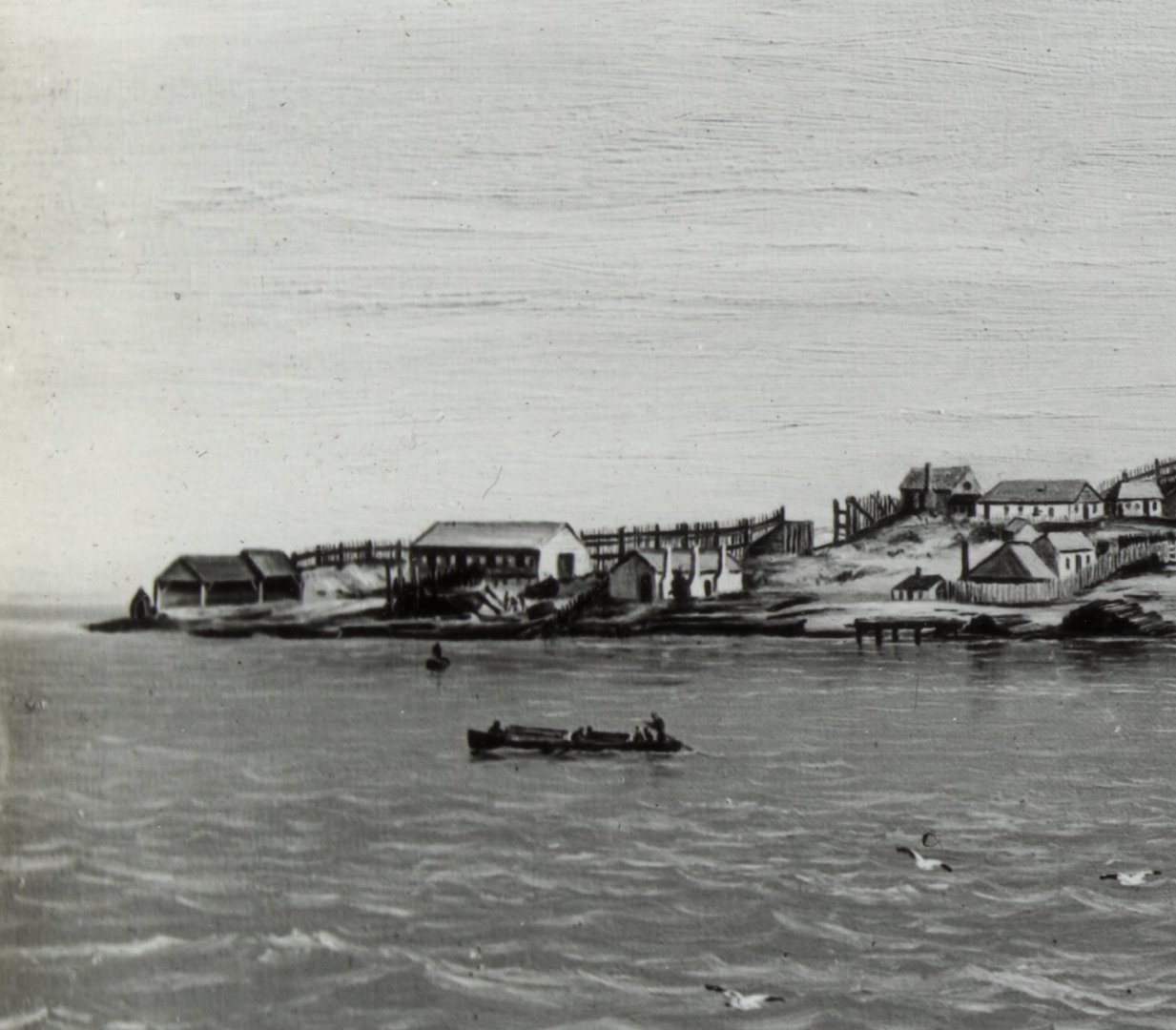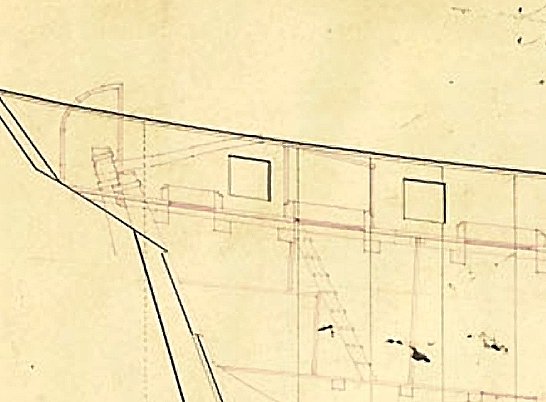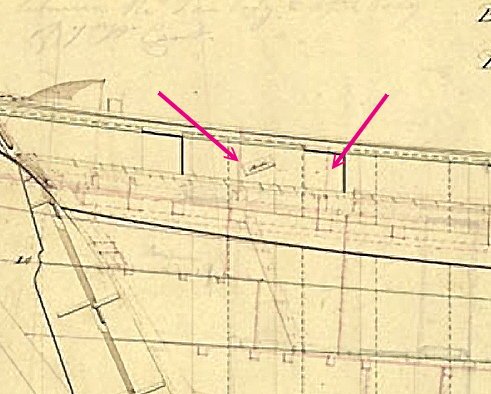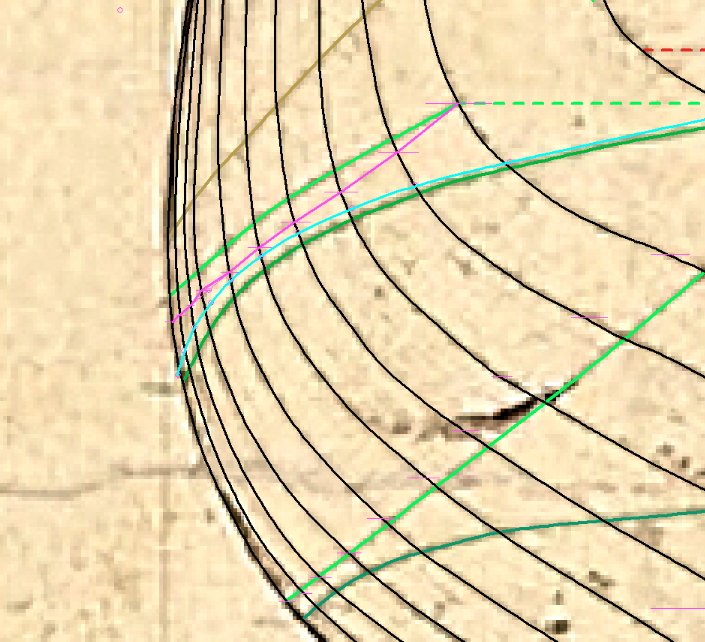-
Posts
967 -
Joined
-
Last visited
Content Type
Profiles
Forums
Gallery
Events
Everything posted by iMustBeCrazy
-

Lapwing 1816 Revenue Cutter
iMustBeCrazy replied to iMustBeCrazy's topic in CAD and 3D Modelling/Drafting Plans with Software
-

Lapwing 1816 Revenue Cutter
iMustBeCrazy replied to iMustBeCrazy's topic in CAD and 3D Modelling/Drafting Plans with Software
It's certainly not final but I should have pointed out that whereas the others are every second station, as usually depicted, that one is station 15, only a single step from the preceding station (14). It's a bit of a guesstimate to try to fill in the huge gap between station 14 and the transom. Same goes for the first station at the bow. If I could get out and buy some cardboard I would mock it up to get a better feel for the lines. But, thank you, all criticisms and suggestions gratefully accepted! -

Lapwing 1816 Revenue Cutter
iMustBeCrazy replied to iMustBeCrazy's topic in CAD and 3D Modelling/Drafting Plans with Software
G'day Tony, Actually, I didn't. I haven't delved very deeply into all the sisters, half-sisters, cousins and nieces, there's too many. Cutter then Schooner is the way I see it, the Cutter painting is dated 1840 and the sailplan 1841 so that works. I guess I will have to investigate Bramble further. -

Lapwing 1816 Revenue Cutter
iMustBeCrazy replied to iMustBeCrazy's topic in CAD and 3D Modelling/Drafting Plans with Software
I needed a break from staring at lines on a screen. Midship frame 1:24 in MDF. 1:24 is massive! 1:48 might be too fiddly for PoF for me, top timbers would be like matchsticks. -

Lapwing 1816 Revenue Cutter
iMustBeCrazy replied to iMustBeCrazy's topic in CAD and 3D Modelling/Drafting Plans with Software
Ok, new sheer plan based on the disposition of frames for Speedy (1828): Lots of work to go, all of these squares need to be filled (this is only stations D, B, 0, 2 and 4): -

Lapwing 1816 Revenue Cutter
iMustBeCrazy replied to iMustBeCrazy's topic in CAD and 3D Modelling/Drafting Plans with Software
Unless you compare it to the crews. -

Lapwing 1816 Revenue Cutter
iMustBeCrazy replied to iMustBeCrazy's topic in CAD and 3D Modelling/Drafting Plans with Software
Arrrrggggg!!!! Three steps backwards, after drawing up the frames at station 2 I remembered ZAZ6425 has two sets of station lines, then I realised that the sheer plan is based on station lines that have no relationship to frames. While this wouldn't matter for a PoB build I want these drawings to be able to be used for PoF. So I have to re-draw the station lines and sheer plan. Of course I don't have a table of offsets, but fortunately there is a shortcut I can take: By drawing a set of rectangles like the one in pink below, where points a and b are on the intersections of a station line and a reference line (in this case a water line) and point c touches the 45° degree line under the sheer plan, point d is the station line / water line intersection on the sheer plan. Unfortunately I don't have many reference lines on this drawing, basically just 4, so I have to base the shape of the 'frame' on those next to it. -
First they became a fence, did you notice the latitude of Macquarie Harbour? 42° South, that's roaring forties. You might like this one then, Port Arthur the main penal settlement. https://nla.gov.au/nla.obj-1961910992/view?sectionId=nla.obj-1965082829&partId=nla.obj-1961946782#page/n26/mode/1up
-
An account of Macquarie Harbour and Sarah Island: https://nla.gov.au/nla.obj-1956722306/view?sectionId=nla.obj-1965094843&partId=nla.obj-1961882571#page/n40/mode/1up Continuation: https://nla.gov.au/nla.obj-1956083842/view?sectionId=nla.obj-1959466639&partId=nla.obj-1956120316#page/n18/mode/1up
-
Ship building, Sarah Island 1832. The fence in the background is a windbreak the length of the island.
-
Apparently yes, I was aware of shipbuilding at Port Arthur but I assumed small vessels. It seems more likely that the 74 gun was probably built at Sarah Island in Macquarie Harbour on the west coast. http://www.ourtasmania.com.au/devonport/sarah-isld.html If I have it right, the shipyard was to the right of the bridge. A nearly completed Brig was stolen from there by 10 convicts and sailed to Chile but the amazing part is that they got it through 'Hells Gate' the entrance to Macquarie Harbour. https://viewer.slv.vic.gov.au/?entity=IE740422&mode=browse The entrance is just this side of the lighthouse.
-

Lapwing 1816 Revenue Cutter
iMustBeCrazy replied to iMustBeCrazy's topic in CAD and 3D Modelling/Drafting Plans with Software
Lower deck done (I think). It was interesting trying to work out the original Lapwing layout from under the revisions for Speedy, luckily ZAZ6347 for the Basilisk seems based on the original Lapwing. Somehow the squeezed 10 passengers in on the trip to Australia and I have a copy of an advert for 'First Class passage' -

Lapwing 1816 Revenue Cutter
iMustBeCrazy replied to iMustBeCrazy's topic in CAD and 3D Modelling/Drafting Plans with Software
-

Lapwing 1816 Revenue Cutter
iMustBeCrazy replied to iMustBeCrazy's topic in CAD and 3D Modelling/Drafting Plans with Software
Sail plan, just for something different. EDIT: Sailplan updated, now includes spar dimensions an a scale. Please let me know of any spelling or terminology issues. Lapwing Sailplan 1in48.mc.pdf -

Lapwing 1816 Revenue Cutter
iMustBeCrazy replied to iMustBeCrazy's topic in CAD and 3D Modelling/Drafting Plans with Software
A bit more progress. Deck almost done, just winches to do I think. I realise now that I should have drawn all those station lines and guide lines on different layers so I could turn them off, live and learn. -

Lapwing 1816 Revenue Cutter
iMustBeCrazy replied to iMustBeCrazy's topic in CAD and 3D Modelling/Drafting Plans with Software
To try to ease my headache I put together a list of plans relation to the Lapwing etc. I don't think it worked. Lapwing related plans.pdf -

Lapwing 1816 Revenue Cutter
iMustBeCrazy replied to iMustBeCrazy's topic in CAD and 3D Modelling/Drafting Plans with Software
Well, not an impossible fit. Agrees with some of the guesses I have made. But three different drawings have three different arrangements of the deadwood/keelson. And where did that trim on the transom come from? -

Lapwing 1816 Revenue Cutter
iMustBeCrazy replied to iMustBeCrazy's topic in CAD and 3D Modelling/Drafting Plans with Software
Excellent! Brilliant! There's a 43 in the top left corner, probably when copies were made by or for the Danes. Was there a treaty at that time I wonder? On ZAZ6507 you can just make it out as indicated, it's a bit clearer on ZAZ6377 which shows both a hatch and a deckhouse. I'm guessing he based his model on the drawings Bruce has provided. -

Lapwing 1816 Revenue Cutter
iMustBeCrazy replied to iMustBeCrazy's topic in CAD and 3D Modelling/Drafting Plans with Software
That was what I was referring to. The midship frame drawing seems to be taken from ZAZ6429 (1818) inking in the pencilled alterations. The deck plan has already given me some more clues, thanks again. -

Lapwing 1816 Revenue Cutter
iMustBeCrazy replied to iMustBeCrazy's topic in CAD and 3D Modelling/Drafting Plans with Software
Thanks Bruce, not as such. The midship section appears later than Lapwing, ZAZ6428 is dated 1817 and shows the bloody great deck beam knee I posted above. The one you've posted seems to be 1818 or later. The deck plan/s are better quality than I have but still seem to be 1817 or later (or perhaps 'as built'). Still great to have, they will make things a little easier. EDIT: May have been a refit as she was still in service in 1843. -

Lapwing 1816 Revenue Cutter
iMustBeCrazy replied to iMustBeCrazy's topic in CAD and 3D Modelling/Drafting Plans with Software
Lines from two different drawings (note the blue and black lines on the left): Digital lofting (note, 4 is a typo for station 6 but I'll call it 4 for now): so line 4 is too far to the left, it should run through the two circles. This is indicated by the kink in the pink line. The difference is not much more than the thickness of a pencil line on the original 1/48 plans. What I'm working from: -

Lapwing 1816 Revenue Cutter
iMustBeCrazy replied to iMustBeCrazy's topic in CAD and 3D Modelling/Drafting Plans with Software
Many of the photos do, must be the lighting. The Lapwing ran aground at least twice, the outcome the last time wasn't so good. The Lapwing was on a Government mooring in Port Elliot South Australia , during a blow the harbour master had a Brig tied on astern of the Lapwing. The mooring failed and both ran aground. The Brig was saved. Interestingly, it seems that the Nightingale was launched as a schooner. -

Lapwing 1816 Revenue Cutter
iMustBeCrazy replied to iMustBeCrazy's topic in CAD and 3D Modelling/Drafting Plans with Software
What little original information I have found does not indicate that any were clinker planked. ZAZ6429 Has some alterations noted, dated 1818, with carvel planking pencilled in suggesting that Speedy launched in 1828 was very likely carvel planked. But that's not proof. EDIT: Just checked his book and he says: "She is carvel built, and carries eight 6 pounder guns. Some readers may be aware that some of these cutters were clench built, although I have no evidence to show which method was used for 'Speedy', ---------" And as you mention class, most references give it as Nightingale class, however depending on how you classify them I suggest that the above vessels form three classes as I grouped them above: Lapwing (First of class) Nightingale (some alteration to frames, but I'm not sure what) Vigilant (First of an enlarged version of the Lapwing, about 6 feet longer, allowing for an extra pair of guns)
About us
Modelshipworld - Advancing Ship Modeling through Research
SSL Secured
Your security is important for us so this Website is SSL-Secured
NRG Mailing Address
Nautical Research Guild
237 South Lincoln Street
Westmont IL, 60559-1917
Model Ship World ® and the MSW logo are Registered Trademarks, and belong to the Nautical Research Guild (United States Patent and Trademark Office: No. 6,929,264 & No. 6,929,274, registered Dec. 20, 2022)
Helpful Links
About the NRG
If you enjoy building ship models that are historically accurate as well as beautiful, then The Nautical Research Guild (NRG) is just right for you.
The Guild is a non-profit educational organization whose mission is to “Advance Ship Modeling Through Research”. We provide support to our members in their efforts to raise the quality of their model ships.
The Nautical Research Guild has published our world-renowned quarterly magazine, The Nautical Research Journal, since 1955. The pages of the Journal are full of articles by accomplished ship modelers who show you how they create those exquisite details on their models, and by maritime historians who show you the correct details to build. The Journal is available in both print and digital editions. Go to the NRG web site (www.thenrg.org) to download a complimentary digital copy of the Journal. The NRG also publishes plan sets, books and compilations of back issues of the Journal and the former Ships in Scale and Model Ship Builder magazines.


